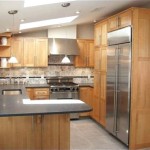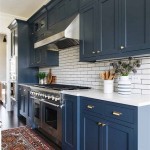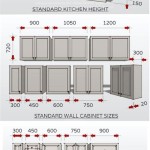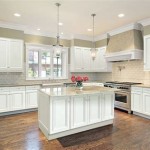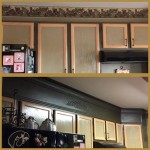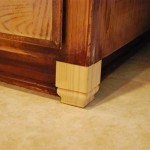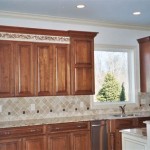```html
Chinese Kitchen Cabinets: A Comprehensive Overview
Chinese kitchen cabinets, often a distinctive feature in modern homes, represent a blend of traditional aesthetics and contemporary functionality. Their popularity stems from their unique designs, diverse materials, and cost-effectiveness, making them a sought-after choice for homeowners and interior designers globally. Understanding the nuances of Chinese kitchen cabinets requires an examination of their construction, materials, styles, and the considerations involved in their procurement.
The term "Chinese kitchen cabinets" generally encompasses a wide range of cabinet styles manufactured in China. These cabinets are produced in varying qualities and price points, ranging from mass-produced, budget-friendly options to custom-designed, high-end pieces. This spectrum of choice caters to a broad consumer base with differing budgetary constraints and design preferences.
Materials Used in Chinese Kitchen Cabinetry
The materials used in the construction of Chinese kitchen cabinets are diverse, influencing both the appearance and durability of the finished product. The core materials commonly include:
Solid Wood: Solid wood cabinets represent the premium end of the spectrum. Frequently employed woods include oak, maple, birch, and cherry. Solid wood offers superior strength, durability, and a timeless aesthetic appeal. However, solid wood cabinets are typically more expensive and require proper care to prevent warping or cracking due to changes in humidity. The quality of solid wood used can vary significantly, impacting the overall longevity of the cabinet.
Plywood: Plywood is a common substrate used for cabinet boxes. It consists of multiple layers of wood veneer glued together to form a stable and strong panel. High-quality plywood offers good resistance to moisture and warping, making it a suitable choice for kitchen environments. The grade of plywood is crucial; higher grades contain fewer voids and imperfections, leading to a more durable and aesthetically pleasing cabinet.
Particleboard and MDF: Particleboard and Medium-Density Fiberboard (MDF) are engineered wood products made from wood particles bonded together with resin. These materials are less expensive than solid wood and plywood, making them popular choices for budget-friendly cabinets. However, particleboard and MDF are less resistant to moisture and can swell or disintegrate if exposed to water. MDF provides a smoother surface than particleboard, making it a better option for painted finishes.
Laminates and Melamine: Laminates and melamine are decorative surface materials applied to substrates like particleboard or MDF. Laminates are typically thicker and more durable than melamine, offering greater resistance to scratches and wear. Both materials are available in a wide range of colors, patterns, and textures, including imitations of wood grain. They are easy to clean and maintain, making them a practical choice for kitchen cabinets.
The selection of materials significantly impacts the price, durability, and aesthetic appeal of Chinese kitchen cabinets. Understanding the characteristics of each material is crucial for making informed decisions.
Styles and Designs of Chinese Kitchen Cabinets
Chinese manufacturers offer a vast array of cabinet styles and designs to cater to diverse tastes. These styles reflect both traditional Chinese aesthetics and contemporary global trends. Key styles include:
Traditional Chinese Style: Characterized by intricate carvings, ornate details, and the use of rich colors such as red, gold, and black. Traditional Chinese cabinets often feature raised panel doors, decorative hardware, and elements inspired by Chinese architecture. These cabinets evoke a sense of elegance and cultural heritage, appealing to those seeking a classic and opulent kitchen design.
Modern and Minimalist: Embracing clean lines, simple forms, and a focus on functionality. Modern Chinese kitchen cabinets often feature flat-panel doors, minimalist hardware, and a neutral color palette. They emphasize a sleek and uncluttered aesthetic, suitable for contemporary homes. Materials like high-gloss laminates and stainless steel are frequently used to enhance the modern look.
Transitional Style: Blending elements of traditional and modern design. Transitional Chinese kitchen cabinets feature a balance of classic and contemporary features, such as Shaker-style doors with modern hardware or a combination of natural wood finishes and painted surfaces. This style offers versatility and can be adapted to various design preferences.
European-Inspired Designs: Many Chinese manufacturers produce cabinets inspired by European styles, such as Italian and Scandinavian designs. These cabinets often feature frameless construction, sleek hardware, and a focus on maximizing storage space. They appeal to homeowners seeking a sophisticated and functional kitchen design.
Beyond these broad categories, there are numerous variations and customizations available, allowing homeowners to create unique and personalized kitchen spaces. The availability of diverse styles is a significant advantage of sourcing cabinets from Chinese manufacturers.
Considerations When Purchasing Chinese Kitchen Cabinets
Purchasing kitchen cabinets from Chinese manufacturers involves several key considerations to ensure a satisfactory outcome. These include:
Quality Control: The quality of Chinese kitchen cabinets can vary significantly depending on the manufacturer and price point. It's crucial to conduct thorough research and select reputable suppliers with established quality control processes. Requesting samples and inspecting them carefully can help assess the quality of materials and workmanship. Third-party inspection services can provide an independent assessment of the cabinets' quality before shipment.
Certification and Standards: Ensure that the cabinets meet relevant international standards for safety and environmental compliance. Look for certifications such as CARB (California Air Resources Board) for formaldehyde emissions and FSC (Forest Stewardship Council) for sustainable forestry practices. Meeting these standards indicates a commitment to quality and responsible manufacturing.
Shipping and Logistics: Shipping cabinets from China involves significant logistics challenges. It's essential to factor in shipping costs, customs duties, and potential delays. Working with a reliable shipping company or freight forwarder can help streamline the process and minimize risks. Clear communication with the manufacturer regarding packaging and labeling requirements is also crucial.
Communication and Language Barriers: Effective communication with the manufacturer is essential to ensure that the cabinets meet your specifications. Language barriers can sometimes pose challenges, so it's helpful to work with suppliers who have English-speaking representatives or utilize translation services. Clearly documenting all requirements and specifications in writing can help avoid misunderstandings.
Warranty and After-Sales Service: Inquire about the warranty offered by the manufacturer and the availability of after-sales service. A comprehensive warranty provides protection against defects in materials and workmanship. Understanding the manufacturer's policies on returns, replacements, and repairs is crucial for addressing any potential issues that may arise after installation.
Pricing and Payment Terms: Obtain detailed price quotes from multiple suppliers and compare them carefully. Clarify all costs, including manufacturing, shipping, customs duties, and taxes. Negotiate favorable payment terms and consider using secure payment methods such as letters of credit to protect your interests. Avoid making large upfront payments to unfamiliar suppliers.
Customization Options: Evaluate the extent to which the manufacturer can accommodate custom designs and specifications. If you require unique cabinet sizes, configurations, or finishes, ensure that the supplier has the capabilities and expertise to meet your needs. Requesting detailed drawings and prototypes can help visualize the final product and ensure accurate execution.
By carefully considering these factors, homeowners and designers can mitigate risks and maximize the chances of a successful procurement process when purchasing Chinese kitchen cabinets.
In conclusion, Chinese kitchen cabinets present a diverse range of options in terms of materials, styles, and price points. A thorough understanding of the construction, design elements, and procurement considerations is vital for making informed decisions and achieving satisfactory results. Due diligence in selecting reputable suppliers, verifying quality standards, and managing logistics are crucial for a successful outcome.
```
Kitchen Cabinet

American Cabinets Versus Chinese

How To Buy And Import Kitchen Cabinets From China Foshan Sourcing

Antique Chinese Red Solid Wood Kitchen Cabinets Op13 013 China Made In Com

Chinese Kitchen Cabinets Whole House Customization China Modern Including Quartz Countertop Made In Com

Sn21 Kc006 Kitchen Cabinet Jpg

How To Buy And Import Kitchen Cabinets From China Foshan Sourcing

Chinese Kitchen Cabinets Whole House Customization China Modern Including Quartz Countertop Made In Com

12 Cottage Style China Cabinets Decorating

80 Asian Style Kitchen Ideas Photos Design Interior
Related Posts


